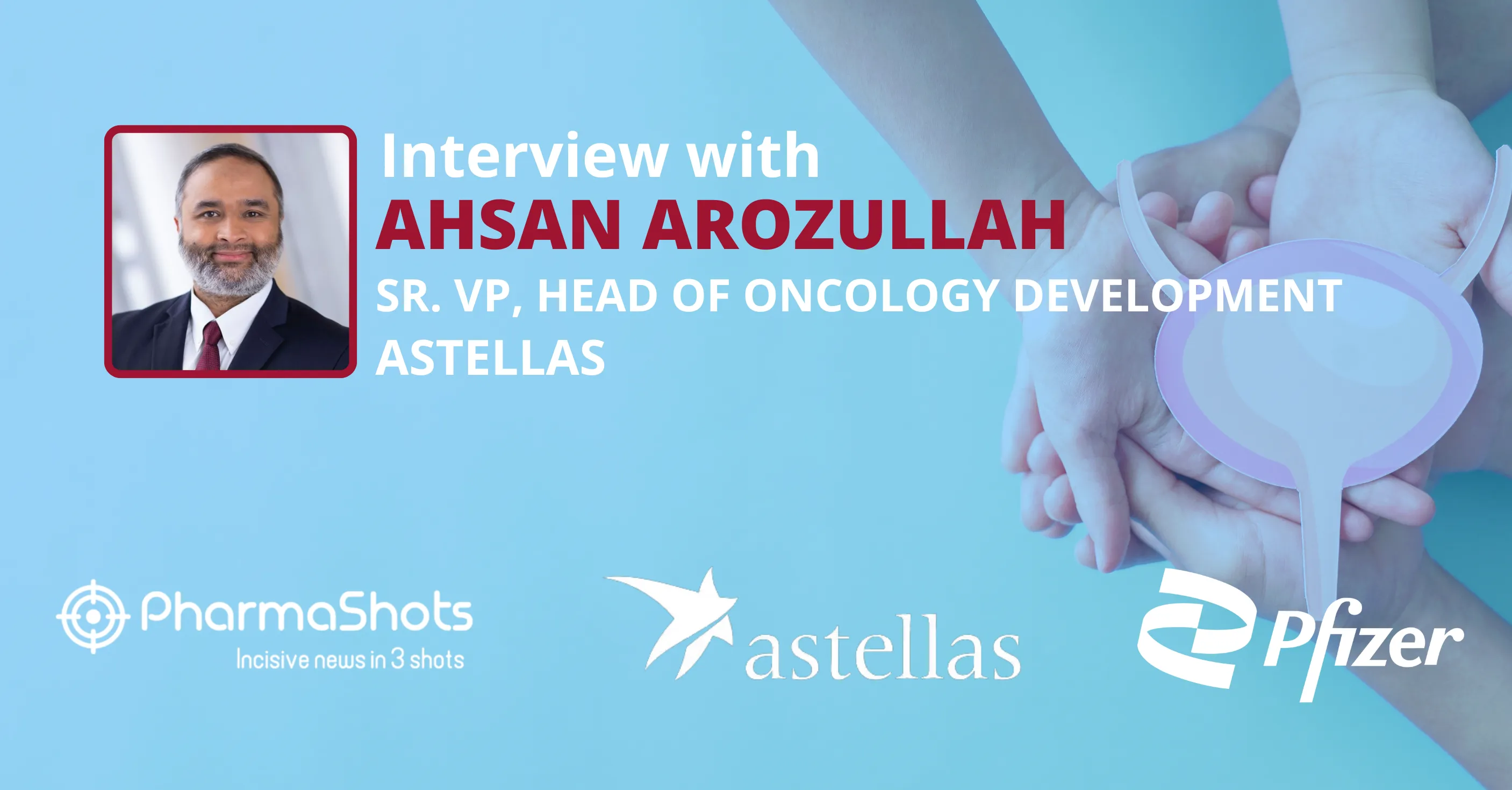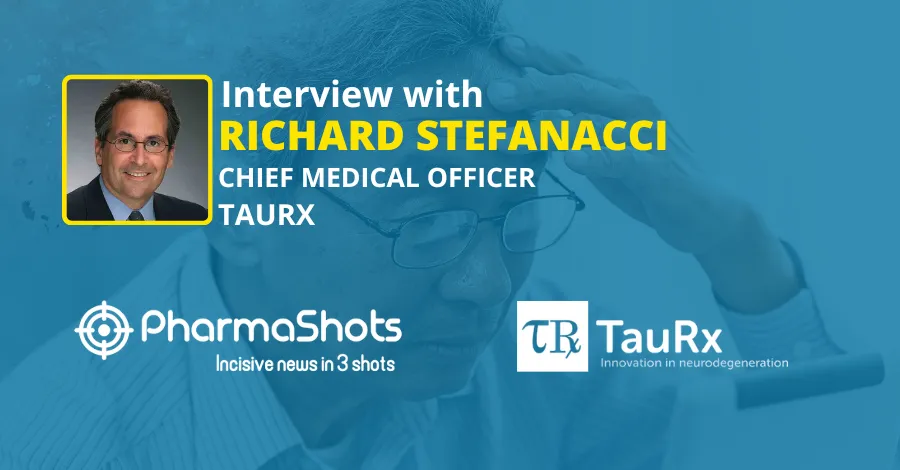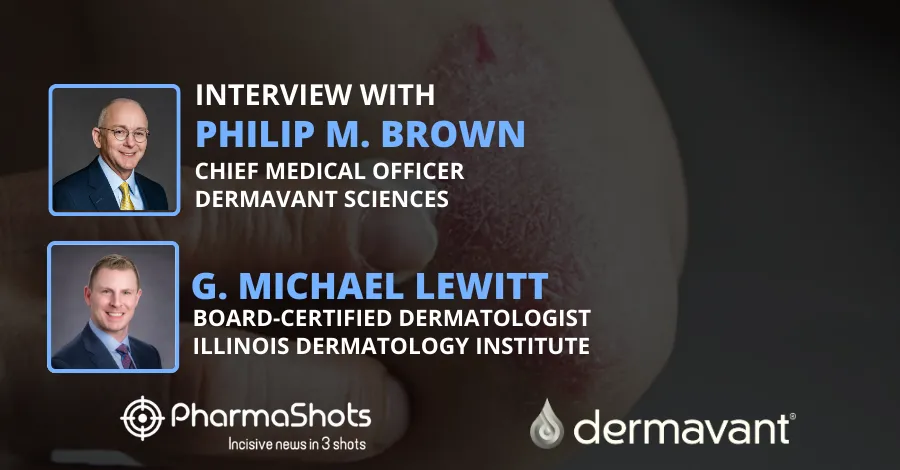
PharmaShots Interview: Novartis’ Todd Fox Shares Insight on the US FDA's Approval of Cosentyx for Enthesitis-Related Arthritis and Psoriatic Arthritis
In an interview with PharmaShots, Todd Fox, Global Medical Franchise Head, Immunology Hepatology and Dermatology at Novartis shares his views on Cosentyx in P-III (JUNIPERA) study for the treatment of enthesitis-related arthritis and psoriatic arthritis
Shots:
- The approval is based on the P-III (JUNIPERA) study to evaluate Cosentyx (75/150mg) vs PBO in 86 children & adolescents aged 2 to 18yrs. with ERA or JPsA
- The results showed that patients treated with Cosentyx for active ERA & JPsA had a long time to flare with a 53% & 85% reduction in risk of flare in pediatric patients. The safety was consistent with the known safety profile of Cosentyx for PsO, PsA, nr-AxSpA & AS
- The therapy was administered as an SC inj. by a pre-filled syringe or Sensoready pen q4w after initial loading doses. The therapy was approved in Japan for PsA and psoriasis in pediatric patients aged ≥6yrs. along with generalized pustular psoriasis in 2021
Tuba: What are active enthesitis-related arthritis (ERA) and active juvenile psoriatic arthritis (JPsA)?
Todd Fox: ERA and JPsA are autoimmune diseases, they are subtypes of juvenile idiopathic arthritis (JIA)
These are both progressive, chronic and potentially debilitating diseases, if left untreated they can have a substantial impact on quality of life and lead to deformities and long-term disability, alongside high levels of pain. ERA is characterized by joint swelling and pain where tendons and ligaments attach to bone. People with the condition may present with low back pain or tenderness at the palpation of the hips. JPsA is characterized by joint swelling and skin psoriasis and may present with nail changes, inflammation of fingers and/or toes, or psoriatic skin changes.
Current treatment options for ERA and JPsA are limited. Children with JIA are reported to have a poorer health-related quality of life status in comparison with other children as a result of high levels of pain, disease activity and school absences, potentially leading to self-reported depression and anxiety.
Tuba: Please tell us about the design and findings of the Phase III JUNIPERA study
Todd Fox: In children and adolescents aged 2 to 17 years old, the JUNIPERA study demonstrated that children and adolescents with active JPsA (n = 34; mean age: 12.2 years) treated with Cosentyx (secukinumab) had a long time to flare, showing an 85% reduction in the risk of flare (P<0.001) versus placebo. In addition, children and adolescents with active ERA (n = 52; mean age: 13.7 years) treated with Cosentyx had a long time to flare, showing a 53% reduction in the risk of flare versus placebo. Nearly 90% of patients achieved JIA American College of Rheumatology (ACR) 30 responses after 12 weeks of treatment with Cosentyx.
JUNIPERA was a 2-year, three-part, double-blind, placebo-controlled, randomized withdrawal, Phase III study that enrolled 86 children and adolescents aged 2 to 17 years old with a confirmed diagnosis of ERA or JPsA according to the International League of Associations for Rheumatology classification criteria. The secukinumab dose in the study was 75 mg for patients weighing less than 50 kg, or 150 mg if weighing 50 kg or more. In the open-label treatment period 1, all patients were given secukinumab up until Week 12.
Patients achieving at least JIA ACR 30 response at the end of treatment period 1 progressed onto treatment period 2 (randomized withdrawal) where they were allocated to continue treatment with secukinumab or begin placebo up until Week 104 or until a flare occurred. Patients who flared then entered open-label secukinumab treatment until Week 104 (treatment period 3).
The primary endpoint of the study was time to flare in treatment period 2 (Week 12 to Week 104). Secondary endpoints in treatment period 1 (up to Week 12) included evaluation of JIA ACR 30/50/70/90/100 responses and each JIA ACR core component, change from baseline of the Juvenile Arthritis Disease Activity Score, and total enthesitis and dactylitis count.
Tuba: Highlight the key features of Cosentyx (including its mechanism of action, route of administration, dose, and dosage regimen)
Todd Fox: Cosentyx is the first and only fully human biologic that directly inhibits interleukin-17A, a cornerstone cytokine involved in the inflammation of psoriatic arthritis (PsA), moderate to severe plaque psoriasis, ankylosing spondylitis (AS), and non-radiographic axial spondyloarthritis (nr-axSpA). Cosentyx is a proven medicine and has been studied clinically for more than 14 years and is backed by robust evidence, including 5 years of clinical data in adults supporting long-term safety and efficacy across several systemic inflammatory conditions, with more than 500,000 pediatric and adult patients treated worldwide since launch.
The dose used in the JUNIPERA study is the approved dose for the treatment of pediatric psoriasis – 75 mg (for patients weighing less than 50 kg) or 150 mg (for patients weighing 50 kg or more). For JPsA and ERA patients weighing 15 kg or more and less than 50 kg the approved dose of Cosentyx is 75 mg and for patients weighing 50 kg and more the approved dose is 150 mg. It is administered as a subcutaneous injection by a pre-filled syringe or Sensoready pen at Weeks 0, 1, 2, 3, and 4 and every 4 weeks thereafter.
Tuba: Can you list out all the regulatory timelines that Cosentyx received/is yet to receive?
Todd Fox: Novartis has filed a regulatory submission for Cosentyx in ERA and JPsA in children and adolescents in Europe with a decision anticipated in the coming months. In addition, Novartis filed submissions for ERA and JPsA in children and adolescents in a number of other countries in 2021, including Canada, Australia, and Switzerland.
We are also investigating Cosentyx in giant cell arteritis (GCA) (Phase III), lupus nephritis (Phase III), and lichen planus (Phase IIa). Novartis is investigating Cosentyx in hidradenitis suppurativa (HS) – results will be discussed with regulatory authorities with the ambition of bringing Cosentyx to HS patients who need it.
Tuba: What are the different indications that Cosentyx can be used to treat?
Todd Fox: In the US, Cosentyx is approved to treat:
- Moderate to severe plaque psoriasis in patients 6 years and older who are candidates for systemic therapy or phototherapy
- Active psoriatic arthritis (PsA) in patients 2 years of age and older
- Adults with active ankylosing spondylitis (AS)
- Adults with active non-radiographic axial spondyloarthritis (nr-axSpA) with objective signs of inflammation
- Active enthesitis-related arthritis (ERA) in patients 4 years of age and older.
Cosentyx has treated more than 500,000 patients worldwide since its launch.
Tuba: Are you planning to conduct more studies in the Immunology, Hepatology, and Dermatology space?
Todd Fox: Current ongoing clinical trials are investigating Cosentyx in HS (Phase III SUNRISE and SUNSHINE) with submission filing planned in 2022, GCA (Phase III trial) with expected readout in 2024, lichen planus (Phase IIa trial; PRELUDE) with data expected H1 2022 as well as lupus nephritis (Phase III trial; SELUNE).
Novartis plans on expanding Cosentyx to 10+ indications over the next 10 years with a potential total addressable population of 10 million patients worldwide.
Tuba: How are the sales of Cosentyx helpful to boost up Novartis’ economy?
Todd Fox: Cosentyx is the largest medicine by sales for Novartis. At Q3 2021, Cosentyx had sales of USD 1.2 billion, driven by demand across indications in the US and Europe and strong volume growth in China. In Q3 2021, Novartis increased the peak sales guidance for Cosentyx to at least USD 7.0 billion.
Tuba: Would you like to tell our viewers about the services of Cosentyx Connect?
Todd Fox: Cosentyx Connect is a free customized program for people considering or taking Cosentyx in multiple countries, including the US. It includes tools and services to help patients learn more about Cosentyx.
Source: Medical News Today
About Author:

Todd Fox is the Global Medical Franchise Head for Immunology, Hepatology, and Dermatology at Novartis. He has worked in medical affairs for over 15 years in several different capacities as well as several different therapeutic areas focusing on inflammation and immunology such as transplantation, rheumatology, dermatology, nephrology, and hepatology. He received his bachelor’s degree in B.Sc. Biochemistry from the University of Alberta along with Pharmacy Internship, Infectious Diseases from the Loma Linda University
Related Post: PharmaShots Interview: PolyPid’s Dikla Czaczkes Akselbrad Shares Insights on the P-III (SHIELD I) Trial of D-PLEX100













